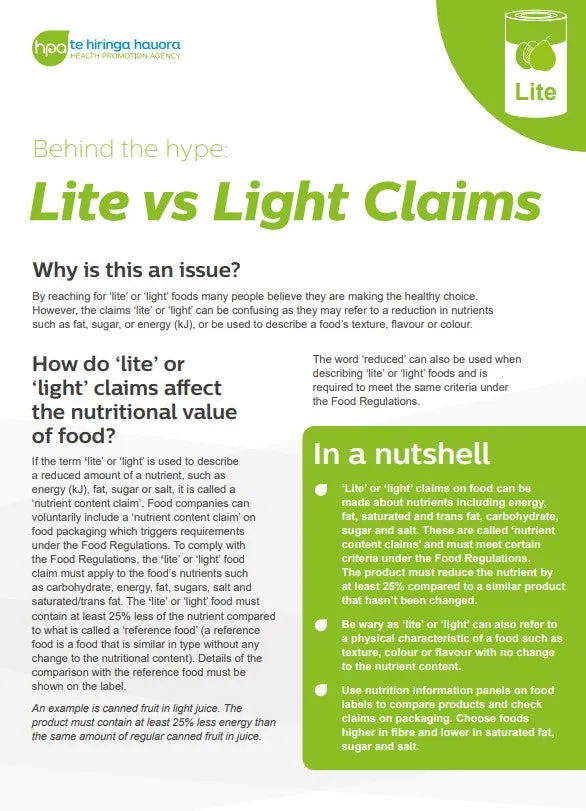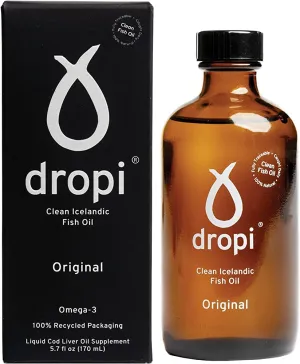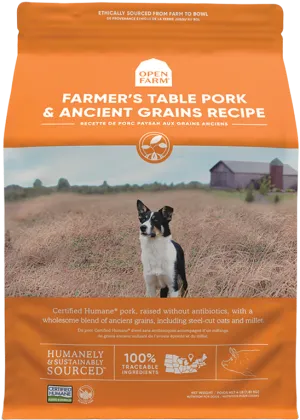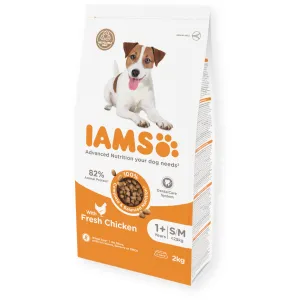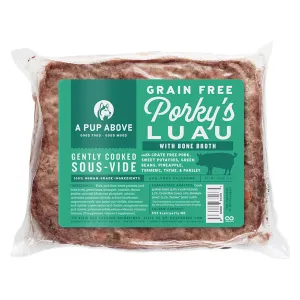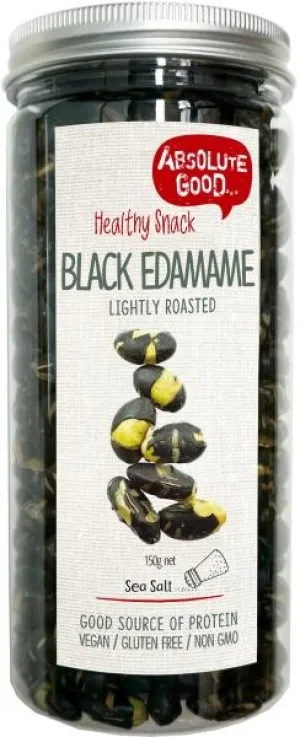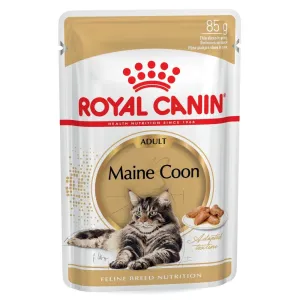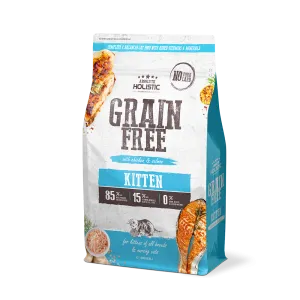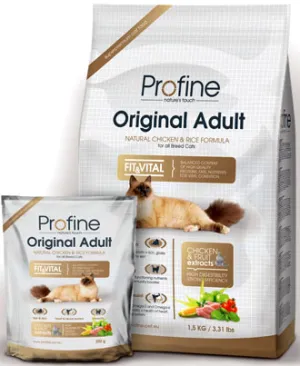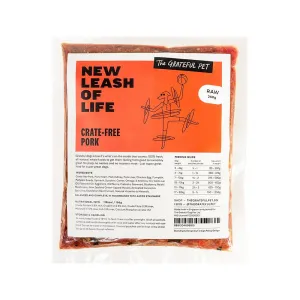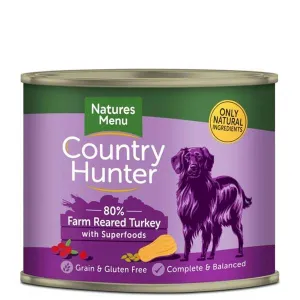Behind the hype: Carbohydrates
In a nutshell
‘Lite’ or ‘light’ claims on food can be made about nutrients including energy, fat, saturated and trans fat, carbohydrate, sugar and salt. These are called ‘nutrient content claims’ and must meet certain criteria under the Food Regulations.
The product must reduce the nutrient by at least 25% compared to a similar product that hasn’t been changed.
Be wary as ‘lite’ or ‘light’ can also refer to a physical characteristic of a food such as texture, colour or flavour with no change to the nutrient content.
Use nutrition information panels on food labels to compare products and check claims on packaging. Choose foods higher in fibre and lower in saturated fat, sugar and salt.
Why is this an issue?
By reaching for ‘lite’ or ‘light’ foods many people believe they are making the healthy choice. However, the claims ‘lite’ or ‘light’ can be confusing as they may refer to a reduction in nutrients such as fat, sugar, or energy (kJ), or be used to describe a food’s texture, flavour or colour.
How do ‘lite’ or ‘light’ claims affect the nutritional value of food?
If the term ‘lite’ or ‘light’ is used to describe a reduced amount of a nutrient, such as energy (kJ), fat, sugar or salt, it is called a ‘nutrient content claim’. Food companies can voluntarily include a ‘nutrient content claim’ on food packaging which triggers requirements under the Food Regulations. To comply with the Food Regulations, the ‘lite’ or ‘light’ food claim must apply to the food’s nutrients such as carbohydrate, energy, fat, sugars, salt and saturated/trans fat. The ‘lite’ or ‘light’ food must contain at least 25% less of the nutrient compared to what is called a ‘reference food’ (a reference food is a food that is similar in type without any change to the nutritional content). Details of the comparison with the reference food must be shown on the label.
An example is canned fruit in light juice. The product must contain at least 25% less energy than the same amount of regular canned fruit in juice.
The word ‘reduced’ can also be used when describing ‘lite’ or ‘light’ foods and is required to meet the same criteria under the Food Regulations.
What about other uses of ‘lite’ or ‘light’?
‘Lite’ or ‘light’ can also be used to describe the flavour, colour or texture of foods. For example, when ‘lite’ or ‘light’ is used on oil products, it usually refers to the colour or flavour of the oil and does not affect the nutritional value. These oils will contain the same amount of fat and energy as any other oil. In the case of potato chips, light can refer to how thinly the chips are cut with no change to the nutrient content.
When are lite or light foods healthier choices?
When ‘lite’ or ‘light’ foods are lower in the claimed nutrient by at least 25% it is a healthy change. It is important to keep in mind that while lower in a nutrient, these products are not always ‘low fat’ or ‘low salt’. Especially foods that are high in fat or salt to begin with. For example, regular cheddar cheese is 35% fat whereas ‘lite’ cheddar cheese still contains 24% fat.
Some foods displaying claims of ‘lite on fat’ may have added sugar or salt to improve flavour. It is best to compare the overall nutrient content with other brands to make the healthier choice.
Remember to make healthier choices by choosing and preparing foods:
- with unsaturated fats instead of saturated fats
- that are low in salt (sodium)
- with little or no added sugar
- that are mostly whole or less processed.
How do we know the nutritional content of a food product?
Look for the Nutrition Information Panel which is found on all packaged food, and use the per 100g column to compare across brands. It can also be used to verify nutrient content claims. For a healthier choice, choose foods that are:
- higher in fibre
- lower in saturated fat
- lower in sodium
- lower in sugar.
Look for foods that contain less energy (kilojoules) if you are watching your weight.
References
This resource is for digital download only.
Behind the hype: Lite vs Light Claims - NPA163




